Most experienced off-roaders, overlanders, and off-highway vehicle (OHV) riders will tell you…”If you have never been stranded in the backcountry, you haven’t been overlanding enough.”
The point of this saying is that, as a remote backcountry adventurer, eventually you will need some survival skills. An axle bearing will melt down, a brake line will snap, you will slide on a sheet of ice putting your vehicle on its side in a ditch next to the trail, you may break a shock perch, have an engine fire and your vehicle completely burns, or you could become very ill after drinking from a backcountry stream. All these problems and thousands more must be considered in your preparation.
This is the first installment in the training series –Survival and Bushcraft for Overlanders. It is designed to help anyone survive a minor or major mishap, breakdown, or accident in the backcountry. That said, the series is not about “living off the land” for an endless length of time. Those in-depth topics are best left to survival manuals. This series can help you remain comfortable for several hours, days, or even a week or two in the backcountry should a remote adventure go bad.
Topics covered in this series will include:
-Survival fire building
-In field water disinfection
-Signaling for help
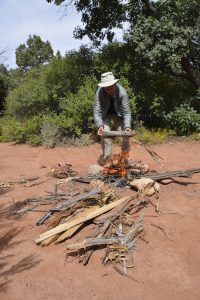
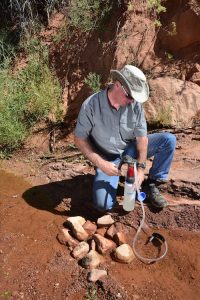
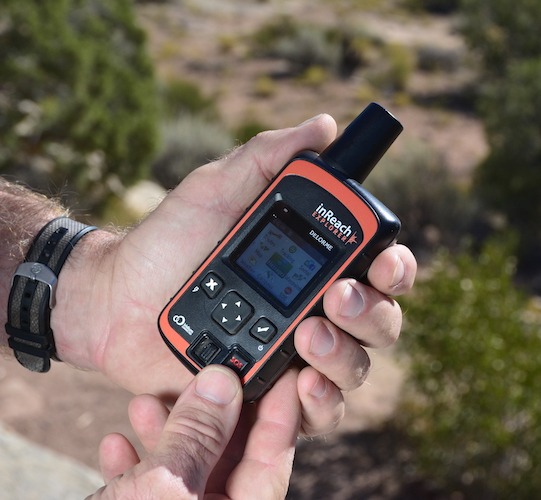
Survival skills are being forgotten in our society. Those who journey into the backcountry should practice survival skills and be prepared for anything. Backcountry or urban survival depends on applying basic principles and adapting them to the circumstances. The survival pyramid reflects these basic principles.
The Survival Pyramid is organized in a thoughtful manner with the least important component at the top and the most important at the bottom. Most survival experts agree that the will to live is the most important aspect of surviving a problem in a wilderness, remote, or delayed-help situation. Kit (equipment, tools, resources) is the least important, although a well-stocked vehicle and survival bag can be a blessing in a bleak backcountry environment. Skills and knowledge are in the middle, positioning them as less important than the will to live and more important than your kit.
The Will to Live
The will to live is all about attitude. It can be described mental toughness.Your body may be fit, but how about your mind? How about your attitude? The will to live is a form of persistence coupled with the desire to succeed. It is possible to perish from a backcountry mishap if you do not have the will to live, even if you know a lot about survival or have the best survival kit in the world.
When an awful backcountry incident occurs, consciously decide that you still have much to contribute to society and your family. Stay resolute in your resolve to get beyond the bigger problem by solving little ones in a thoughtful priority order. Grooming Survival Skills and Knowledge begins long before you venture into the backcountry. Read, study, and practice survival skills.
Consider each of the following ways to augment your survival abilities.
Take an off-road or OHV safety course from a professional off-road educator. Knowing how to properly drive off road helps you avoid mishaps and mistakes. Find an instructor who teaches for one reason only: to genuinely help you. The course curriculum should enhance your skill and ability. Choose an instructor who will challenge you, provide you with new skills, and give you feedback that will enhance your abilities. Make sure your instructor prepares you for the worst-case scenario. Doing so will prepare you for everything else.
Complete a Wilderness First Aid certification course. Knowing how to medically take care of yourself and others has to be a top priority. Assemble a complete wilderness first aid kit appropriately sized to your needs and skill ability. Pictured here are three sizes of kits.
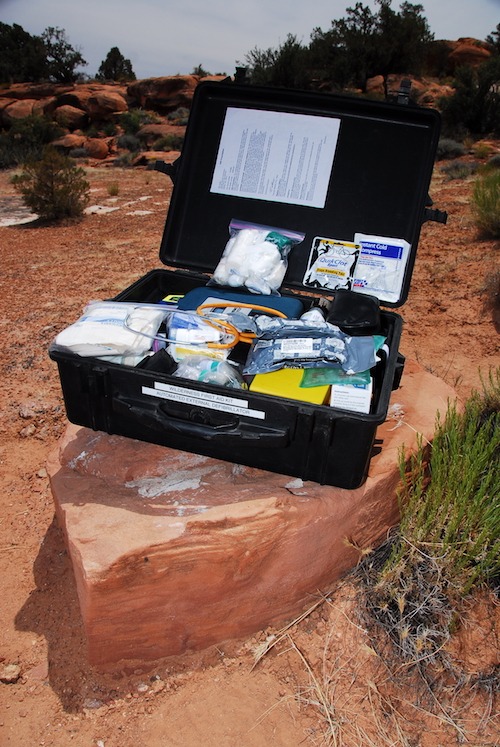
Become at least a technician-level ham radio operator. Ham radios can reach out for hundreds of kilometers/miles in an emergency, especially if you know how to use local repeaters, or you own and know how to use High Frequency radios.
-An Emergency communication device-have one with you on all your adventures: A personal location beacon (PLB), a satellite emergency notification device (SEND), or satphone. Two commonly used SENDs are the SPOT and DeLorme inReach.
-Purchase books on backcountry survival techniques, and read them. Better yet, take an actual survival course from a survival expert. Read actual survival stories. Survivors who write about their mishaps often provide accounts that are inspirational and informative.
-Consider taking a defensive handgun, shotgun, and/or rifle course. You may also contemplate getting a concealed carry weapon (CCW) permit in your state or county. When you are in a remote backcountry area, sheriffs and rangers are often many hours away, even if you can communicate with them (and this is rare). The more you overland, the better the chances you will run into unsavory people who will want what you have, or may simply desire to do you harm.
-Word of Caution: Foreign Countries and Camping with Firearms- Be very careful taking firearms into foreign countries – often this is illegal and carries heavy fines and imprisonment. Do your homework prior to crossing boarders.
-Please Note: Camping with a firearm in the United States can get complicated – Getting a concealed carry weapons (CCW) permit for the state you are in is the best way to legally carry a weapon when overlanding and camping. Short of getting a permit, many states consider a tent your temporary home and all home-centric gun rules apply.
Do your homework prior to keeping a firearm in your vehicle or tent. Know all the laws for the state you are in. I will add this, however. Since I train BLM and National Park law enforcement in my 4WD training courses, I can tell you that the rangers I have spoken with on this topic would NEVER cite you for having a loaded firearm in your vehicle or tent when traveling off-road on a remote backcountry trail. In fact, I had one National Park Ranger tell me…”As an off-roader, you are a fool if you travel solo in the remote backcountry and don’t have a way to defend yourself. As law enforcement, we would typically be unable to assist you if you are confronted by people wanting to do you harm. Most of the National Parks do not have enough law enforcement personnel to cover the acreage we are asked to patrol.” You are on your own in the backcountry.
Whether you choose to carry a firearm or not, if you travel solo in the remote backcountry and don’t have a way to defend yourself and your loved ones, you may be asking for trouble.
Final Thought
As they say, “Knowledge is Power.” Knowing how to help yourself in a backcountry survival situation will support your will to live. Knowledge provides you with some amount of self-confidence. The knowledge and skills you will learn in this series will make you more confident.
Words & Photos by Bob Wohlers:
Bob teaches corporate, government, and recreational off-road safety, survival, and wilderness first aid courses. Some of Bob’s corporate clients have included T-Mobile, Verizon, PG&E, and Southern California Edison. As a registered government contractor, he teaches courses for the National Park Service and BLM. Currently, Bob teaches monthly introductory and advanced recreational off-roading at Prairie City, a California State Recreational Vehicular Area (SRVA). He also organizes and leads groups on 4WD adventure tours into the remote backcountry. Find out more about his trainings and guided adventures at discoveroffroading.com
Bob’s new book, “Live Long to Wander-Basic Survival and Bushcraft for Vehicle-Supported Adventure: To be released at the 2017 Overland Expo in May.





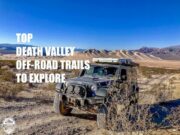

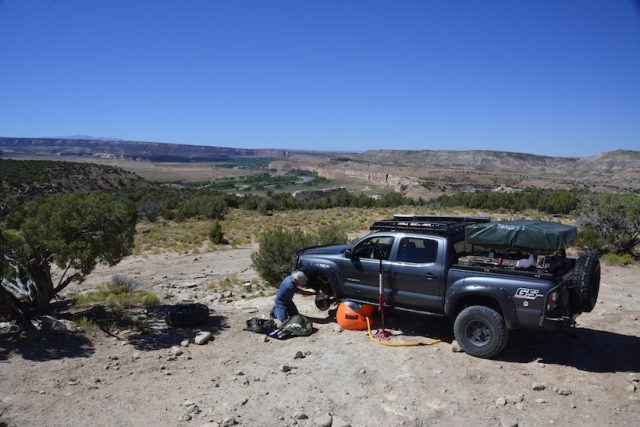
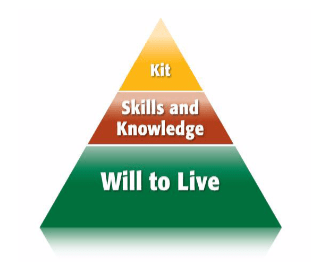
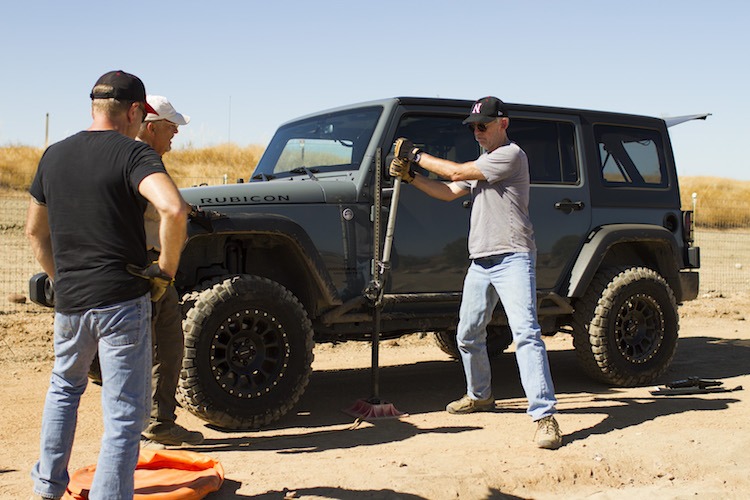
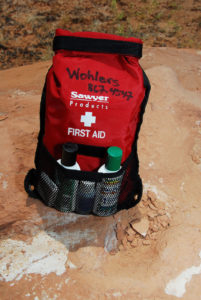
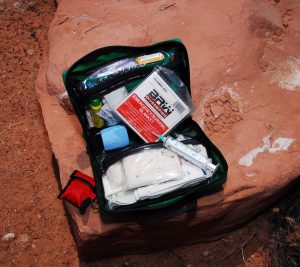
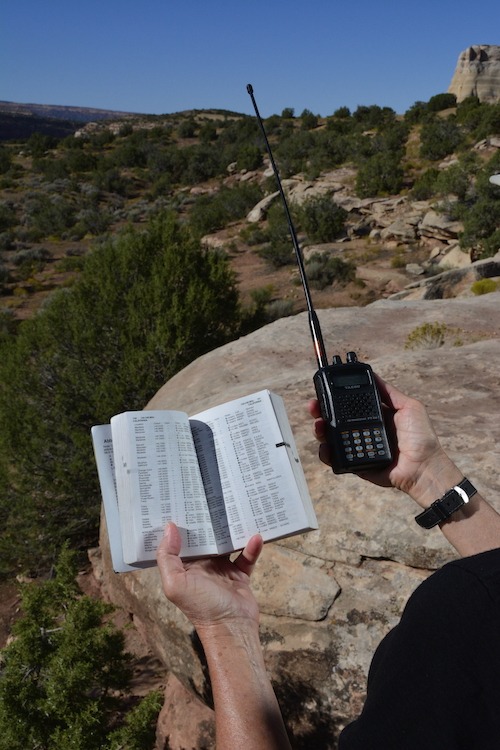
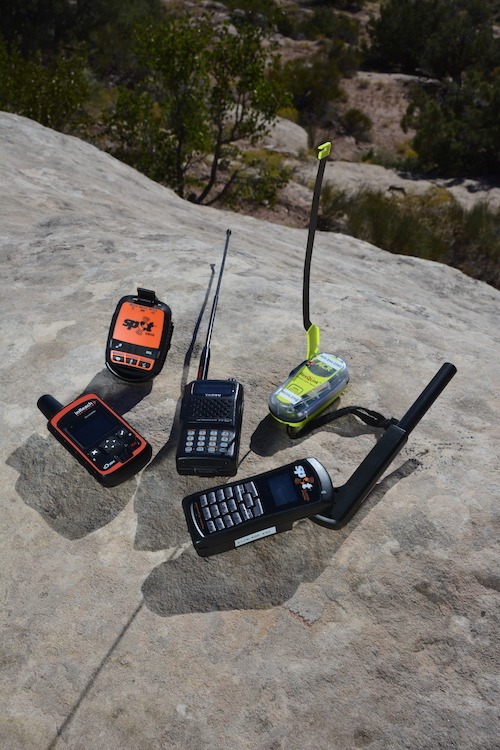
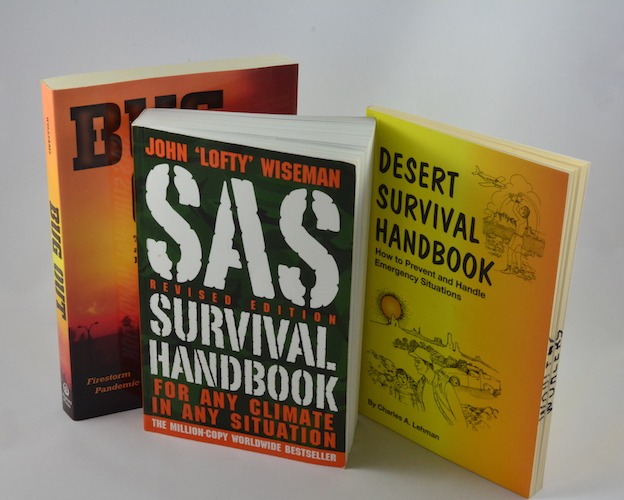
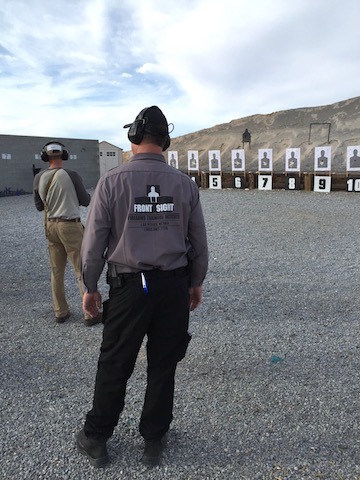
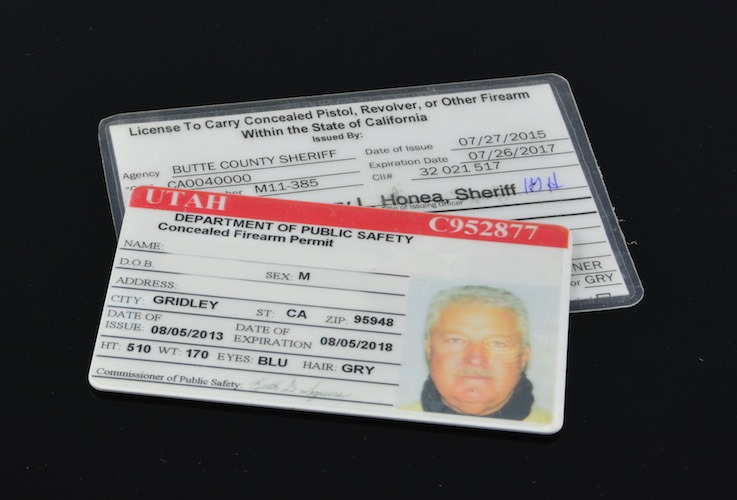
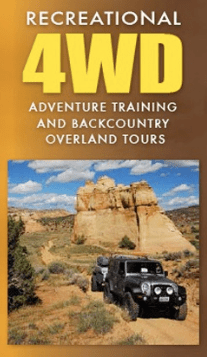
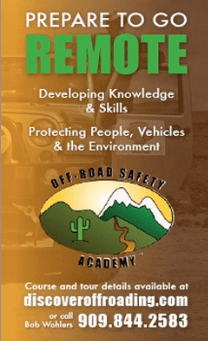







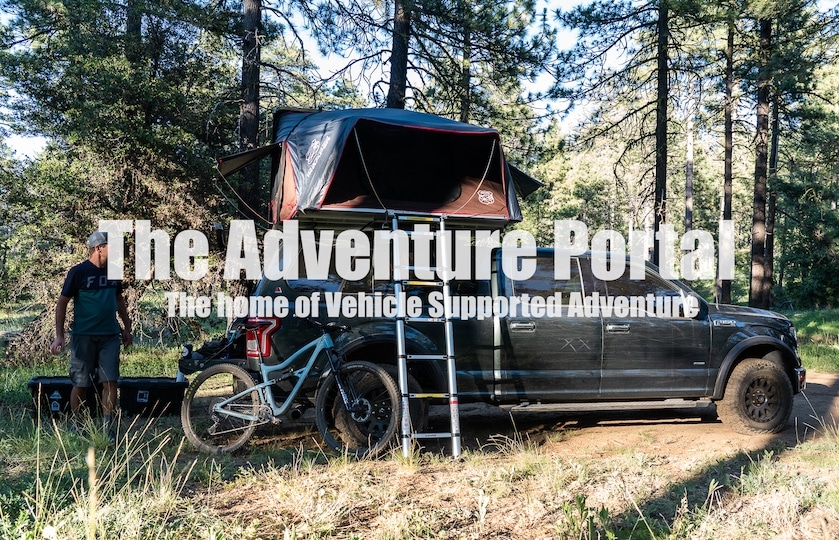
Haha. Taken from the X-Jack owners manual “Never use X Jack for vehicle maintenance, accessory fitment or wheel removal.”
Tom… Sarcasm aside; GREAT comment! You are correct; that is a “warning” in the X-Jack instruction guide. Good catch; kudos mate. A reminder however…
This article (and series) is about bushcraft and survival skills for vehicle-supported adventures. The opening image was merely to show a “break down.” A “possible” reason you may need some survival skills in the backcountry. The article does not “focus” on proper jack use.
However, I believe (as it’s obvious you do also) every image should illustrate proper technique. That said, some time ago I called ARB (the USA distributor) who put me in touch with Bushranger and asked about this “warning.” The dissertation I got was this: “The warning is primarily to dissuade folks from using the X-Jack to work on their cars at home IN A GARAGE.” This makes total sense, given the context of the entire warning. I’ll bet you know as I do, that the X-Jack CAN be useful on uneven terrain to remove a tire. In the field (as the ol’ saying goes) “What works is what counts.”
The image you are commenting on is actually from a book I’ve just finished writing, titled: “Rising to the Occasion in Your 4WD – Safely and Effectively Using Your Hi-Lift, Inflatable, Hydraulic, and Scissor Jack.” The image is one in a series of photos showing proper jack usage. I will have the administrator of this site swap out the photo to a wider shot showing a Hi-Lift Jack also supporting the truck – just behind the front door panel. Plus, we then slid the removed tire under the front of the vehicle for added lifting security. That gave the truck three support items to hold the vehicle during axle repairs; VERY safe. Keep in mind, a photo is a snapshot in time; not a complete story.
Just having a little fun. Good article and I agree with everything you have touched on. Personally have Ham license, Spot locator, trained a few times with Bill at BB4WA, Outdoor Emergency Care thru NSP, Lots of Navigation training and I think II have a “will to live” hasn’t been tested thoroughly 🙂 I’d recommend a book by Lawrence Gonzalez, titled Deep Survival – Who lives, Who dies and Why. Thanks for the article. Subscribed
Thanks Tom… I’ll look for that book; good tip. Contrary to some, I really enjoy critical comments, and I thank you for yours. I’m still learning also! Thanks for reading The Adventure Portal content carefully; as you did.
Additionally, here’s more thoughts from my book on safe and effective use of jacks:
What Works is What Counts – The STOPA Approach to Problem Solving
Any of these general safety guidelines may have to be violated when you are off road, especially when you are on uneven and soft terrain. Remember,
Often what works is what counts when off-roading and overlanding.
You may need to violate a rule to get unstuck, get going, or repair your vehicle. The caveat here is this: If you do need to violate any of these guidelines, be extra cautious. Before you violate a rule you might want to rethink your plan, to remain safe. Don’t purposefully violate a rule flippantly; THINK!
To safely deploy a jack off road, use the most important tool you have – it’s between your ears. Use your brain and common sense. Before deploying a jack, use the STOPA method of problem solving. STOPA is a logical, step-by-step approach to difficult jacking situations (or any difficult situation off road; you’ll also find this approach emphasized in other InfoBooks). STOPA will help keep you from doing something reckless and dangerous. STOPA is an acronym that aids in memory retention. It stands for Stop, Think, Observe, Plan, and Act.